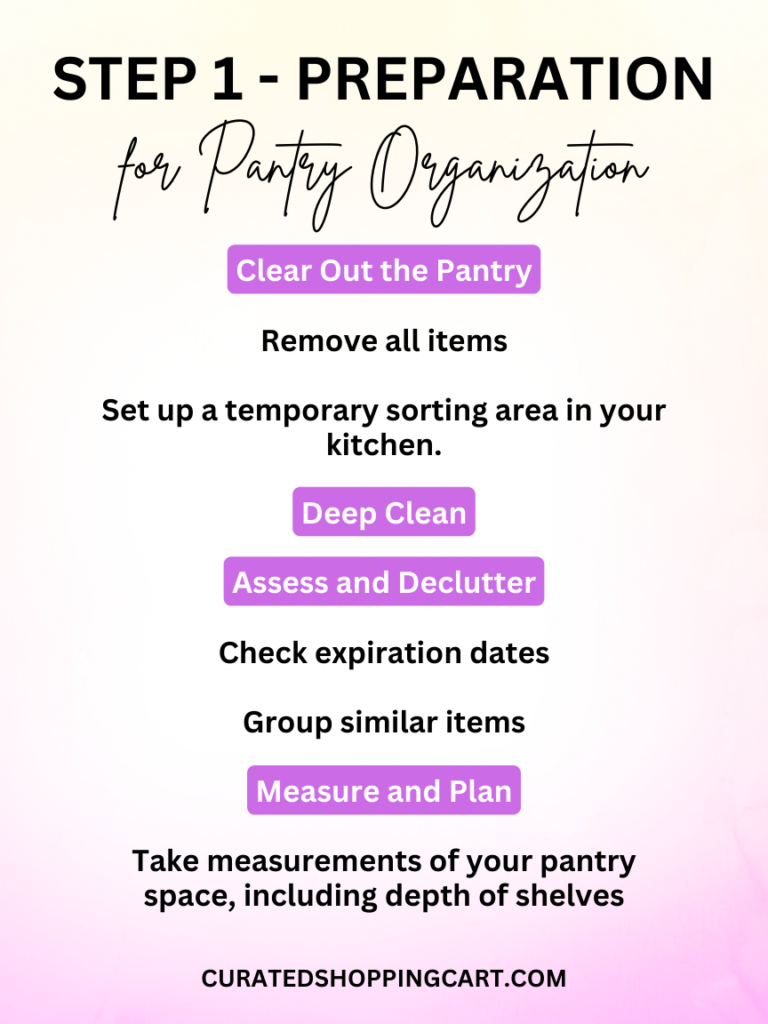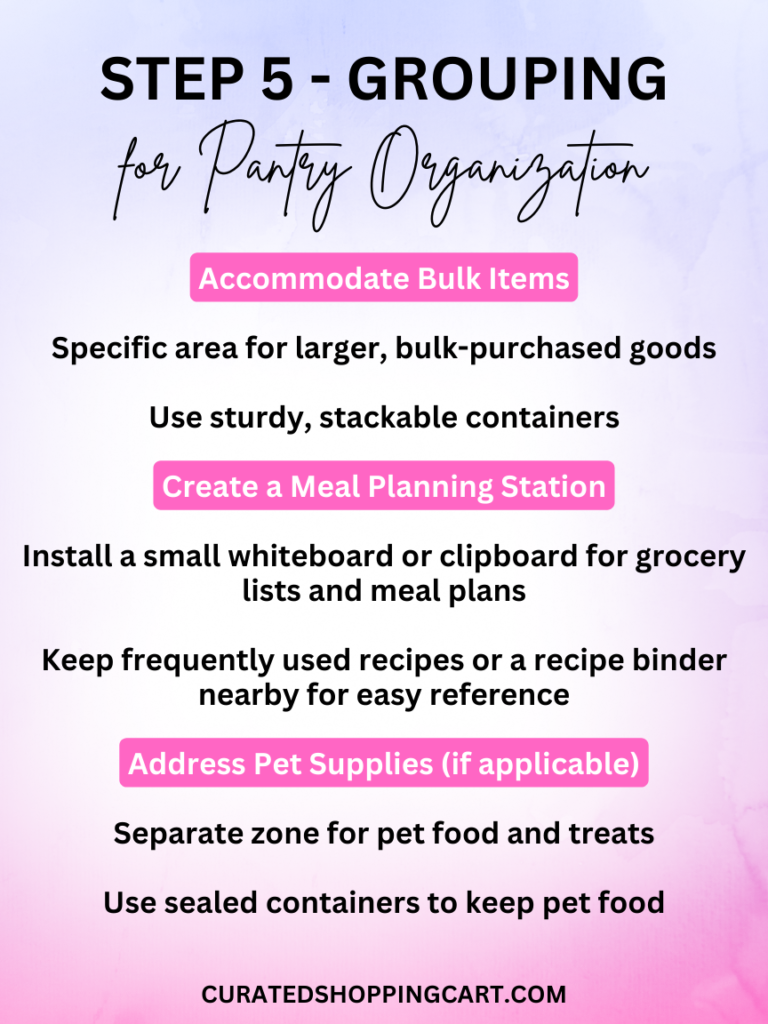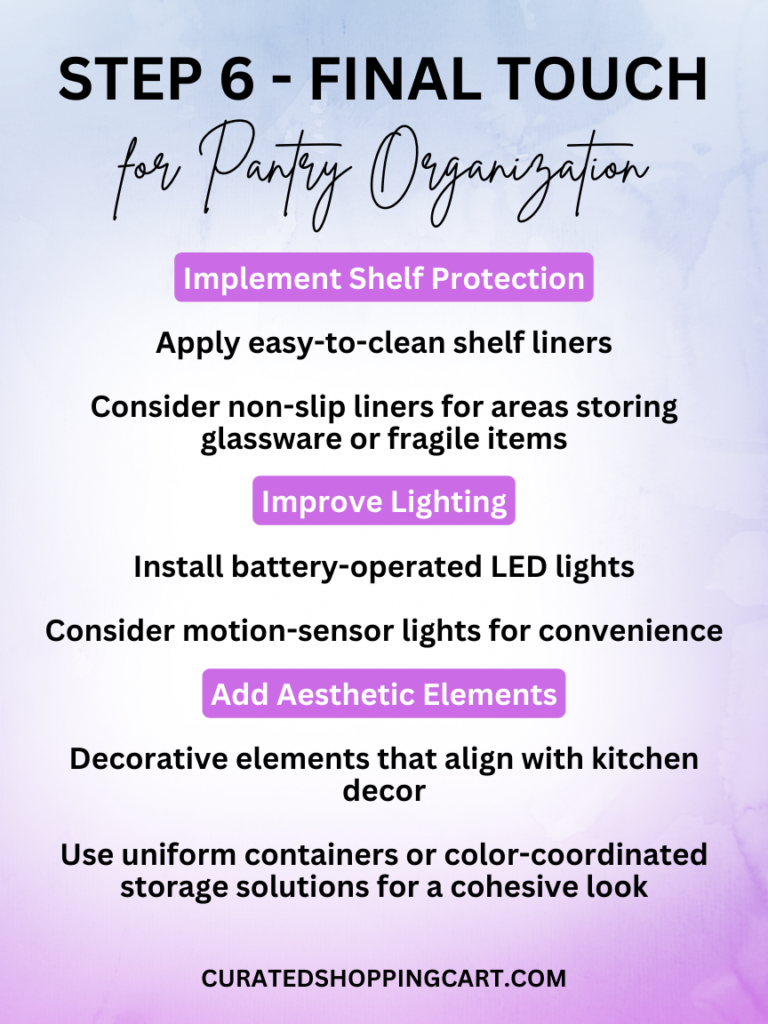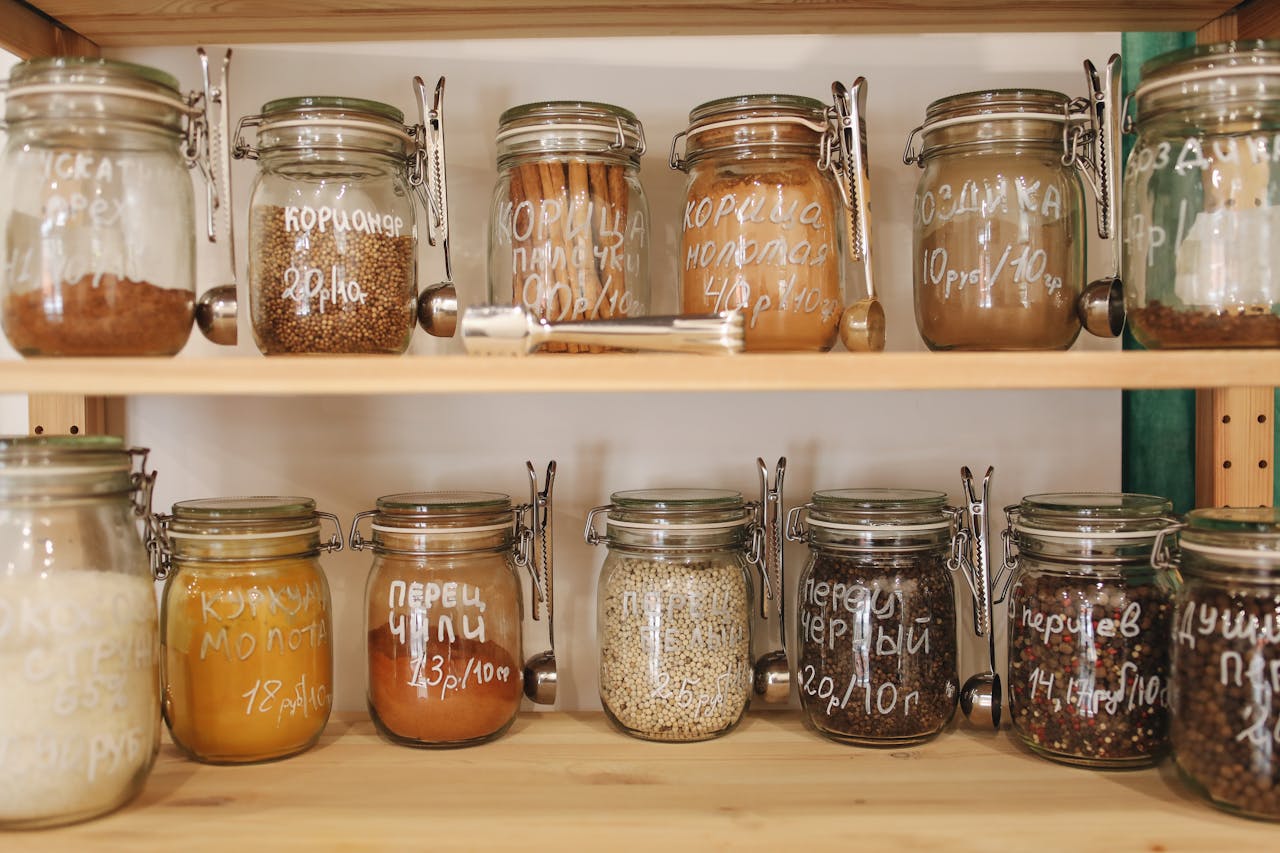Hey there, my friend! Are you tired of going through your pantry for a can of tomatoes or a packet of pasta but can’t find it even after you have turned your pantry upside down? Is the thought of having to clean up and organize your pantry to a functional one overwhelming and makes you want to give up before you even started?
Or maybe, you just have no idea where to even begin organizing you pantry. Whatever the case may be, this checklist will quickly take your pantry from chaos to organized chaos (but not really! I always know exactly where that pesky oregano seasoning is, with this method).
With this checklist – you can figure out what kind of system works for your unique needs and kitchen habits. Whether you have a walk-in pantry, a few dedicated cabinets, or something in between, this checklist is designed to be adaptable to spaces of all sizes. Don’t worry, we’ll walk you through the entire process, from initial cleaning up to maintaining your newly organized space.
So, roll up your sleeves, put on some motivating and fun music, and let’s turn your pantry into the organized (or slightly chaotic), functional space you’ve always dreamed of. With a little effort and this handy checklist, you’ll be well on your way to a pinterest-worthy pantry. Well then, Let’s get started!
Preparation Phase

- Clear Out the Pantry
- Remove all items from shelves, drawers, and floor space.
- Set up a temporary sorting area in your kitchen.
- Deep Clean
- Thoroughly wipe down all surfaces with appropriate cleaning agents.
- Vacuum or sweep the floor to remove debris.
- Consider steam cleaning for stubborn stains or odors.
- Assess and Declutter
- Check expiration dates and dispose of outdated items.
- Consider donating unexpired, unopened items you won’t use.
- Group similar items to identify excess and redundancies.
- Measure and Plan
- Take measurements of your pantry space, including depth of shelves.
- Sketch a basic layout to plan your organization strategy.
Organizational Tools and Supplies

- Storage Solutions
- Acquire clear, airtight containers for dry goods and baking essentials.
- Select baskets or bins for grouping loose items.
- Choose stackable containers to maximize vertical space.
- Invest in Lazy Susans for corner spaces and hard-to-reach areas.
- Consider pull-out drawers or sliding organizers for deep shelves.
- Labeling System
- Decide on a consistent labeling method (e.g., label maker, chalkboard labels).
- Prepare to label containers, shelves, and zones clearly.
- Space Maximizers
- Obtain shelf risers or expandable shelves to increase storage capacity.
- Select under-shelf baskets for additional storage.
- Consider an over-the-door organizer for vertical space utilization.
Sorting and Categorization

- Create Logical Groupings
- Baking supplies (flours, sugars, leavening agents, extracts)
- Breakfast items (cereals, oatmeal, breakfast bars)
- Canned and jarred goods (vegetables, fruits, sauces, condiments)
- Grains and pastas (rice, quinoa, various pasta shapes)
- Snacks and chips
- Oils, vinegars, and cooking sauces
- Spices and herbs
- Implement Zone System
- Designate specific areas for each category.
- Place frequently used items at eye level for easy access.
- Store heavier items on lower shelves for safety and convenience.
- Allocate upper shelves for less frequently used or seasonal items.
Strategic Storage Implementation

- Optimize Vertical Space
- Install adjustable shelving to customize storage heights.
- Use stackable containers and risers to create additional levels.
- Enhance Accessibility
- Place Lazy Susans in corners and on deep shelves for easy reach.
- Implement pull-out drawers or sliding organizers for back-of-shelf items.
- Utilize Door Space
- Install an over-the-door organizer for spices, small packaged goods, or bags.
- Consider adding hooks for hanging lightweight items or tools.
- Create Efficient Stations
- Set up a dedicated baking station with all necessary supplies.
- Organize a snack zone with clear containers for easy selection.
- Establish a breakfast nook for morning essentials.
- Maximize Shelf Space
- Use under-shelf baskets for additional storage of lighter items.
- Implement shelf dividers to maintain organization of upright items.
Special Considerations

- Accommodate Bulk Items
- Designate a specific area for larger, bulk-purchased goods.
- Use sturdy, stackable containers for items bought in quantity.
- Create a Meal Planning Station
- Install a small whiteboard or clipboard for grocery lists and meal plans.
- Keep frequently used recipes or a recipe binder nearby for easy reference.
- Address Pet Supplies (if applicable)
- Allocate a separate zone for pet food and treats.
- Use sealed containers to keep pet food fresh and pest-free.
Finishing Touches

- Implement Shelf Protection
- Apply easy-to-clean shelf liners to protect surfaces and simplify maintenance.
- Consider non-slip liners for areas storing glassware or fragile items.
- Improve Lighting
- Install battery-operated LED lights to illuminate dark corners.
- Consider motion-sensor lights for convenience.
- Add Aesthetic Elements
- Incorporate decorative elements that align with your kitchen decor.
- Use uniform containers or color-coordinated storage solutions for a cohesive look.
Maintenance Strategy

- Establish Routine Checks
- Schedule weekly quick tidying sessions to maintain organization.
- Perform monthly reviews to address any emerging clutter or disorganization.
- Implement Inventory System
- Maintain a running inventory of staple items.
- Establish par levels for essential goods to guide restocking efforts.
- Rotate Stock Regularly
- Practice the “first in, first out” method to ensure proper product rotation.
- Regularly bring items from the back to the front to prevent overlooking.
By following this comprehensive checklist, you’ll create a well-organized, efficient pantry that enhances your kitchen’s functionality and your overall cooking experience. Remember, an organized pantry not only saves time but also reduces food waste and can inspire more home cooking.







